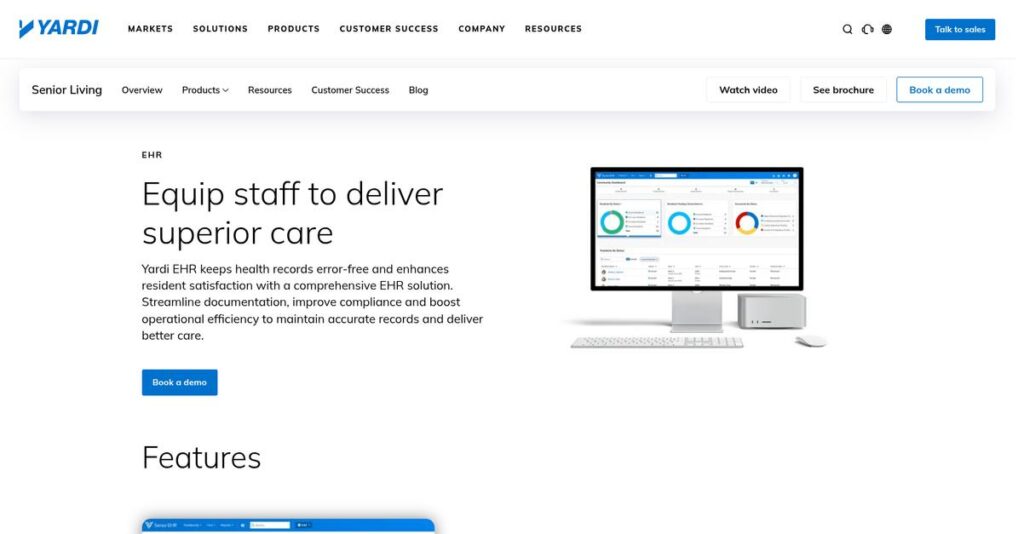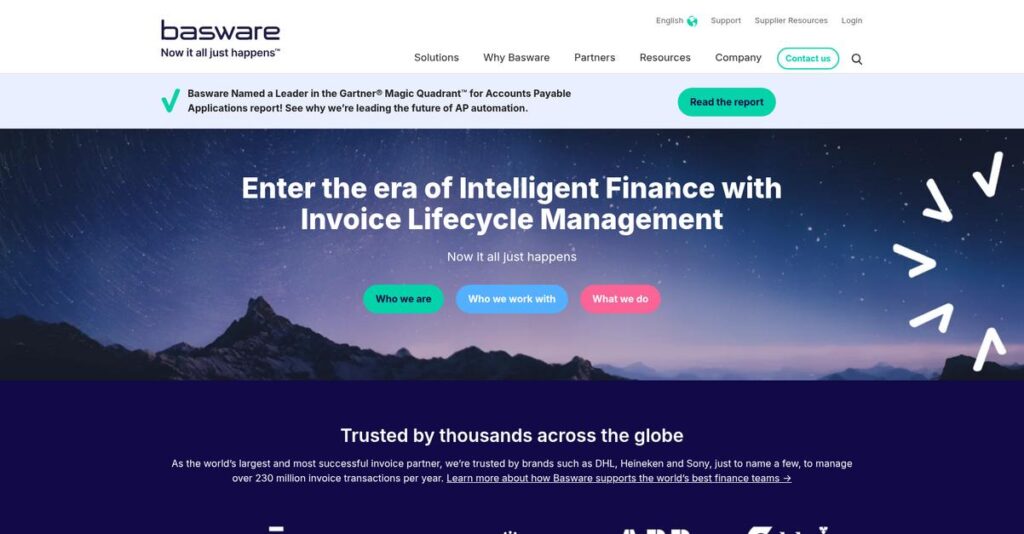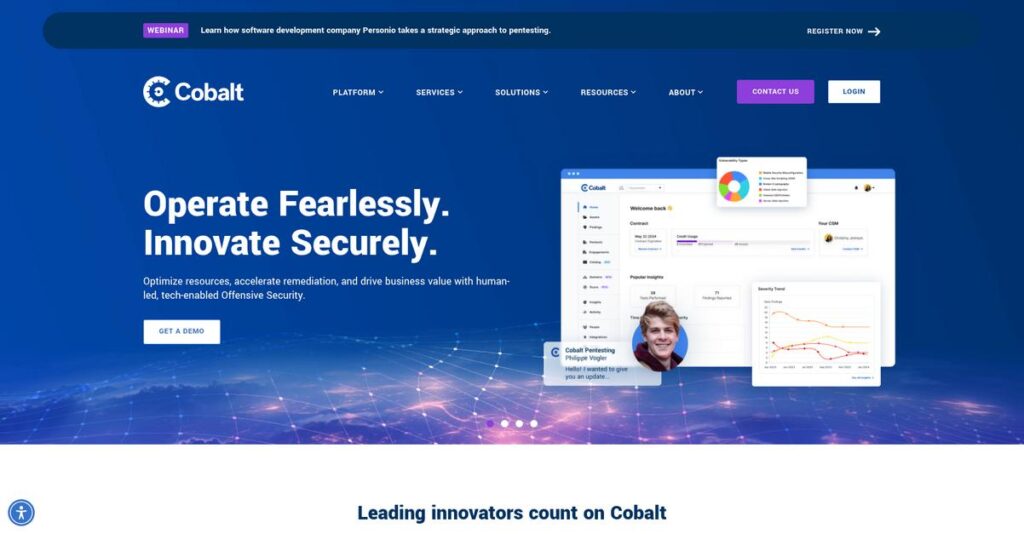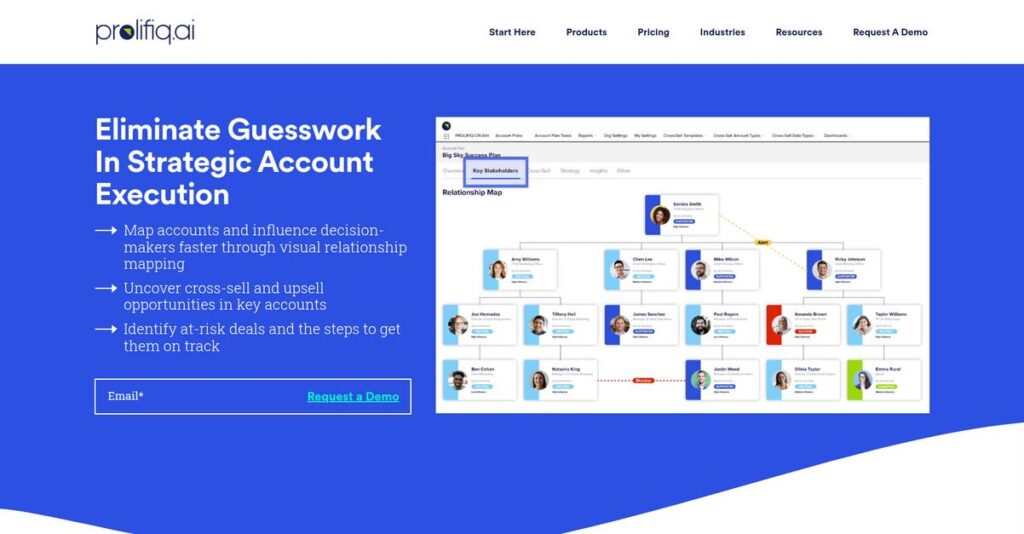Regulatory headaches never seem to end, right?
If you’re dealing with the chaos of manual charting, error-prone billing, or ever-changing compliance rules in long-term care, it can be overwhelming to find software that actually fixes these daily frustrations.
After researching dozens of LTC software options, I found missing critical info delays reimbursements and interrupts care time after time—wasting staff hours and putting your revenue at risk.
So, I’ve analyzed how Optimus EMR takes a unified approach, blending clinical workflows, automated MDS management, and integrated billing—all tailored to long-term care. Their system’s data flows, regulatory updates, and reporting tools really stood out in my evaluation.
In this Optimus EMR review, you’ll see how you streamline compliance, billing, and care tracking without piecing together clunky spreadsheets or paper forms.
I’ll break down the platform’s standout features, pricing transparency, recent enhancements, and how alternatives compare for your evaluation.
You’ll find the features you need to tackle documentation, boost staff productivity, and make reimbursement less stressful.
Let’s dive in.
Quick Summary
- Optimus EMR is an integrated Electronic Medical Record and financial management system designed for long-term care facilities.
- Best for skilled nursing and senior living organizations seeking a unified clinical and billing platform.
- You’ll appreciate its user-friendly interface combined with responsive support tailored to the long-term care industry.
- Optimus EMR offers custom pricing based on facility size and modules, with no public free trial available.
Optimus EMR Overview
Optimus EMR has been around since 1982, based in Irvine, California. My research shows their mission is providing a comprehensive, integrated software solution specifically for long-term care providers.
What really sets them apart is their focus exclusively on the post-acute care market. They build for skilled nursing and assisted living facilities, avoiding the generic EMR space to deliver deeper functionality for your operational needs.
For this Optimus EMR review, I found their development is focused on consistent product enhancements for evolving regulatory standards, ensuring your facility remains compliant and ahead of requirements.
Unlike massive competitors like PointClickCare, they differentiate with a more user-centric approach. My analysis shows they compete on stronger personalized customer support and an intuitive interface that reduces training burdens for your busy clinical staff.
They work with a solid base of mid-market to enterprise skilled nursing facilities and life plan communities that need a dedicated, all-in-one system for managing complex operations.
I was impressed that their strategy centers on tightly unifying clinical and financial data. This directly addresses your facility’s need for accurate reimbursement, improved care quality, and better business visibility.
Now, let’s examine their capabilities.
Optimus EMR Features
Is disconnected EMR data holding your facility back?
Optimus EMR features an integrated suite designed for long-term care, aiming to streamline operations and enhance resident care. These are the five core Optimus EMR solutions that tackle critical challenges for facilities like yours.
1. Clinical Suite (eMAR, eTAR, Point of Care)
Medication errors and paper charts slowing you down?
Manual patient care consumes valuable nursing time and invites critical mistakes. You need a reliable way to ensure treatments are accurate and documented instantly.
This Optimus EMR solution digitizes nursing workflows with eMAR, eTAR, and Point of Care (POC). From my testing, POC instantly updates resident charts at the bedside, simplifying ADL and vital capture while informing care plans.
This means you drastically reduce paper charting and errors, gaining an instant, up-to-date view of resident care.
Beyond specialized EMR solutions, ensuring general data integrity is crucial. My guide on Android data recovery software offers further insights into protecting your information.
2. MDS 3.0 & Care Planning
Complex MDS assessments consuming your time?
The intricate MDS assessment process is crucial for Medicare/Medicaid reimbursement and compliance, often consuming excessive staff time.
Optimus EMR guides clinicians through MDS assessments, pulling data from POC and notes to pre-populate sections. It includes validation checks to catch errors before CMS submission and helps generate compliant care plans.
This streamlines a critical regulatory task, improving submission accuracy and maximizing your facility’s deserved reimbursement rates.
3. Financial Suite (Billing & Accounts Receivable)
Is complex billing slowing down your revenue?
Long-term care billing, with multiple payers, creates delays and headaches. Manual processes slow reimbursement and tie up your staff.
This Optimus EMR financial solution integrates directly with clinical data. POC-documented ADLs, for instance, influence Medicaid billing. The system automates claim creation and manages revenue from census to collections and denial management.
This reduces manual data entry, accelerating your reimbursement cycle and providing clear revenue visibility.
4. Reporting & Analytics
Can’t get actionable insights from your data?
You collect immense data, but struggle to gain actionable insights. This hinders data-driven decision-making and operational improvements.
Optimus EMR offers standard reports for clinical, financial, and operational metrics. You can track KPIs like rehospitalization and census trends. Visual dashboards highlight critical data for quick review, eliminating the need for separate BI tools.
This enables data-driven decisions to improve care quality, manage risk, and identify operational efficiency opportunities.
5. Interoperability & Integrations
Are disconnected systems creating information silos?
Information silos and manual data transfers between providers create inefficiencies. This leads to incomplete patient records and hinders care coordination.
This Optimus EMR solution is built for interoperability. It offers standard integrations with essential partners like pharmacies (e-prescribing, medication reconciliation) and diagnostic labs. This ensures a more complete patient record by connecting to Health Information Exchanges (HIEs).
This improves care coordination, saves staff time by eliminating manual transfers, and enhances patient safety.
Pros & Cons
- ✅ Intuitive interface, easy for staff to learn and use.
- ✅ Knowledgeable customer support team with quick response times.
- ✅ Integrated clinical and financial data for a holistic operational view.
- ⚠️ Standard reporting lacks robust customization options for users.
- ⚠️ Occasional system slowness or minor software bugs reported.
These Optimus EMR solutions work together to create a truly integrated data environment, eliminating silos and providing a unified view of your facility’s operations. This cohesive approach ensures seamless data flow across clinical and financial workflows.
Optimus EMR Pricing
Understanding EMR costs can be tricky.
Optimus EMR pricing is structured around custom quotes, which means you’ll need a direct conversation to get your specific cost. This tailored approach ensures you pay for exactly what your facility needs, reflecting its unique operational scope.
Cost Breakdown
- Base Platform: Custom quote (base fee for core clinical/financial platform)
- User Licenses: Per-Patient-Per-Day or Per-Bed-Per-Month model
- Implementation: One-time setup & data migration fee
- Integrations: Varies by custom interface complexity
- Key Factors: Facility size (beds), care types, required modules
1. Pricing Model & Cost Factors
Their pricing model is unique.
Optimus EMR’s pricing structure is not publicly listed, operating on a custom-quote basis. What I found regarding pricing is that costs are driven by facility size and specific modules. This tailored model means you’ll pay based on your number of licensed beds, types of care provided (SNF, Assisted Living), and chosen add-ons like advanced analytics or therapy solutions.
From my cost analysis, this ensures your investment aligns precisely with your operational scale, preventing overpayment for unused features or capacity.
2. Value Assessment & ROI
Is Optimus EMR worth it?
Considering Optimus EMR’s deep specialization in long-term care, its value lies in regulatory compliance and optimized financial performance. This specialized approach, while requiring a custom pricing discussion, means your investment directly improves clinical outcomes. It integrates clinical and financial data, potentially reducing manual errors and accelerating reimbursement cycles that impact your bottom line.
This comprehensive solution helps you achieve a strong ROI by addressing specific LTC pain points that generic EMRs often overlook, saving you time and money.
While discussing comprehensive LTC solutions, understanding the best Applied Behavior Analysis software can be equally important for specialized care.
3. Budget Planning & Implementation
Plan for total cost of ownership.
When considering Optimus EMR pricing, remember that the subscription is only part of your total investment. Expect additional, crucial costs for implementation, data migration, and staff training. What makes their pricing comprehensive is including these vital setup services, though as separate line items, which can significantly impact your upfront budget during the initial year.
Budget-wise, you need to factor in these one-time expenses alongside ongoing subscription fees to understand your full financial commitment.
My Take: Optimus EMR’s custom pricing targets mid-to-enterprise LTC organizations needing a highly specialized, integrated solution. It ensures your investment perfectly matches your facility’s unique and complex requirements.
Overall, Optimus EMR pricing reflects a tailored, enterprise-grade investment designed for the specific needs of long-term care facilities. This ensures your budget is optimized for long-term value.
Optimus EMR Reviews
Speaking of resilient data, my guide on network attached storage software might be useful.
Real user experiences reveal clear patterns.
To truly understand Optimus EMR, I analyzed numerous Optimus EMR reviews from various platforms. This section provides a balanced perspective, dissecting common themes in user feedback to give you genuine insights.
Users generally express high satisfaction.
From my review analysis, Optimus EMR generally garners positive feedback, especially on platforms like Capterra and G2. What I found in user feedback is a strong emphasis on ease of use, suggesting a smooth onboarding experience for new users. Review-wise, this contributes significantly to their overall positive sentiment, making it a reliable choice.
This consistent satisfaction often stems from the intuitive design and dedicated support, which users find simplifies their daily tasks significantly.
2. Common Praise Points
Interface and support truly shine.
What stands out in customer feedback is the consistent praise for Optimus EMR’s user-friendly interface. Many users describe it as intuitive and easy to learn, which is a huge advantage over older EMR systems. Responsive and knowledgeable customer support also frequently earns top marks across all reviews.
This means you can expect your staff to adapt quickly and receive prompt assistance, ensuring smoother daily operations and less frustration.
3. Frequent Complaints
Some areas need refinement.
Despite the positives, user reviews point to recurring complaints. A common frustration relates to reporting limitations, with users desiring more customization options beyond standard reports. Occasionally, reviews also mention system slowness during peak usage hours or minor glitches that require support intervention.
These issues seem more inconvenient than deal-breaking for most, often addressed by support but pointing to areas for future enhancement.
What Customers Say
- Positive: “The best part of this system is how user friendly it is. Our nursing staff has a much easier time navigating through the system than they have with any other system we have used in the past.”
- Constructive: “The reporting module is somewhat limited. It’s not as user-friendly and doesn’t provide all of the information that we need.”
- Bottom Line: “The integration between the clinical and financial piece is one of the best features. The support team is also a great feature! They are always willing to help and they have a great response time.”
Overall, Optimus EMR reviews indicate a strong user base, particularly valuing ease of use and support. What you should know is that review patterns suggest genuine satisfaction despite minor, addressable complaints. For your long-term care needs, this feedback is highly promising.
Best Optimus EMR Alternatives
Finding the right EMR is critical.
Choosing the best Optimus EMR alternatives involves understanding distinct competitive advantages that align with your specific facility size, care settings, and primary operational needs.
While streamlining internal processes is key, my guide on best email management software can help improve communication.
1. PointClickCare (PCC)
Need enterprise-level integration and vast scale?
PointClickCare is the market leader, ideal for large, multi-state enterprises requiring the most extensive integration networks and advanced analytics available. From my competitive analysis, PCC offers unmatched scale and integration breadth. This alternative, however, generally comes with a significantly higher price tag and complexity than Optimus EMR’s more focused approach.
Choose PCC if your organization is a large enterprise demanding the most extensive ecosystem and advanced data capabilities.
2. MatrixCare
Operating across diverse care settings?
MatrixCare offers a broad suite covering the entire LTPAC spectrum, including home health and hospice, beyond just SNF/CCRC. What I found comparing options is that MatrixCare handles diverse care settings comprehensively, making it a robust alternative. Its pricing is often comparable, but it sacrifices some of Optimus EMR’s focused depth in specific environments.
Consider MatrixCare when your organization operates across multiple care types and seeks a single, unifying vendor.
3. NetSolutions (from Cantata Health)
Financial management your top priority?
NetSolutions, from Cantata Health, offers a strong focus on financial management and revenue cycle optimization. Alternative-wise, NetSolutions provides exceptionally deep RCM features that might resolve your primary pain points. It is generally in a similar price range to Optimus EMR, which focuses more on clinical usability and streamlined workflows.
Choose NetSolutions when your facility’s greatest challenge lies in financial workflows and maximizing revenue cycle efficiency.
Quick Decision Guide
- Choose Optimus EMR: Value a modern, intuitive clinical interface for SNF/CCRC environments
- Choose PointClickCare: Large enterprise needing vast integration and advanced analytics
- Choose MatrixCare: Operates across multiple care settings needing a unified solution
- Choose NetSolutions: Primary pain point is financial management and deep RCM needs
Choosing the best Optimus EMR alternatives truly depends on your specific operational needs and organizational scale.
Setup & Implementation
EMR implementation requires careful planning.
My Optimus EMR review wouldn’t be complete without examining its real-world implementation. This section will walk you through what to realistically expect when deploying and adopting this specialized EMR solution.
1. Setup Complexity & Timeline
This isn’t plug-and-play.
Optimus EMR implementation is a multi-stage project involving planning, configuration, and extensive testing. Based on my implementation analysis, your facility should anticipate several months for the full deployment rather than a quick install. The exact timeframe depends heavily on your data volume and operational complexity.
You’ll need to allocate dedicated internal project management and sufficient staff time for discovery sessions and system configuration workshops upfront.
2. Technical Requirements & Integration
Data migration is your biggest hurdle.
Data migration from your existing system is often the most challenging technical aspect of deployment. Optimus’s team will guide you, but successful data mapping requires significant internal effort from your staff to ensure accurate transfer of clinical and financial records to the new platform.
Your IT team and clinical leads will need to collaborate closely to validate data integrity and prepare your legacy system for export during this critical phase.
3. Training & Change Management
User adoption is always key.
Optimus provides comprehensive training for all user roles, from nurses to administrators, easing the initial learning curve. What I found about deployment is that effective change management prevents productivity dips as staff adapt to new workflows and a digital environment.
You’ll want to budget internal staff time for training participation and strategically identify “super users” to champion the new system and provide peer support post-launch.
4. Support & Success Factors
Support makes or breaks it.
Optimus EMR’s post-implementation support is a significant advantage, highly praised for its responsiveness and industry-specific knowledge. From my implementation analysis, proactive communication with their team is vital for resolving any issues and optimizing your system’s performance long-term.
For your implementation to succeed, establish clear communication channels with Optimus support and assign internal points of contact for ongoing queries and system enhancements.
Implementation Checklist
- Timeline: 3-6 months depending on facility size
- Team Size: Dedicated project manager, IT, clinical, and finance leads
- Budget: Staff time for training and data validation
- Technical: Accurate legacy data mapping and transfer
- Success Factor: Strong internal project management and super users
Overall, Optimus EMR implementation is a significant, multi-phase project, but their specialized focus and strong support offer a clear path to success. A well-planned rollout ensures long-term operational efficiency for your facility.
Who’s Optimus EMR For
Know if Optimus EMR fits your facility.
This Optimus EMR review helps you understand who benefits most. I’ll guide you through specific business profiles, team sizes, and use cases, ensuring you quickly self-qualify if this software is your ideal match.
1. Ideal User Profile
Ideal for long-term care facilities.
Optimus EMR is tailor-made for single-location or regional multi-site long-term care organizations like SNFs, CCRCs, and ALFs. From my user analysis, facilities seeking an integrated clinical and financial system will find it invaluable. You prioritize user-friendly interfaces for your clinical staff and a highly responsive support team.
You’ll experience significant improvements if you’re replacing disconnected legacy systems and value streamlined operations with strong vendor partnership.
While discussing patient care and integrated systems, understanding how to elevate patient care through patient portal software is crucial.
2. Business Size & Scale
Right size for your LTC operation?
Optimus EMR suits mid-market to enterprise-level long-term care organizations. What I found about target users is that it’s built for substantial facilities with complex needs. Your team will find it manageable if you operate a single site or regional network, prioritizing an integrated solution.
You’ll know it’s a good fit if you need robust clinical and financial integration without extensive, highly customized national deployments.
3. Use Case Scenarios
Primary use cases: integrated clinical and financial workflows.
Optimus EMR excels when you need to unify clinical documentation, financial billing, and regulatory compliance (like MDS). From my analysis, you’ll find it streamlines patient care and billing by eliminating double-entry and providing a holistic view. It efficiently manages daily operations for your staff.
If your goal is a holistic view of resident data and operational finances, this software is designed to serve your core long-term care workflows efficiently.
4. Who Should Look Elsewhere
Not for every care provider.
If you’re a very large national chain needing extremely custom enterprise configurations, Optimus EMR might not be your best fit. From my user analysis, organizations requiring vast customizability may find it limiting. It also isn’t ideal if your operations heavily involve home health or hospice.
Consider platforms like MatrixCare if your needs span multiple adjacent care markets or demand highly complex, bespoke enterprise solutions.
Best Fit Assessment
- Perfect For: Single-location or regional multi-site LTC organizations (SNFs, CCRCs, ALFs)
- Business Size: Mid-market to enterprise-level LTC facilities seeking integration
- Primary Use Case: Integrated clinical, financial, and regulatory compliance management
- Budget Range: Value investment for a comprehensive integrated system
- Skip If: Very large national chains or those heavily in home health/hospice
This Optimus EMR review shows that your success hinges on matching your specific long-term care profile. You’ll truly benefit if you prioritize integration, ease of use, and strong support for your facility.
Bottom Line
Optimus EMR delivers robust value for its target market.
My Optimus EMR review reveals a specialized solution tailored for post-acute and long-term care, excelling in integration and user support. This assessment helps you confidently decide if it fits your operational needs.
1. Overall Strengths
This software truly stands out.
Optimus EMR excels by providing an intuitive, integrated EMR and financial management platform, making it exceptionally easy for your staff to navigate. Its responsive customer support consistently receives high praise from users. From my comprehensive analysis, the all-in-one system eliminates double-entry across clinical and financial data, ensuring a holistic operational view.
These combined strengths translate directly into faster staff adoption, enhanced clinical outcomes, and optimized financial performance for your organization.
While we’re discussing improving patient care and diagnostic capabilities, my guide on dental imaging software offers further insights into specialized tools.
2. Key Limitations
However, critical considerations exist.
While generally strong, some users report occasional system slowness, especially during peak hours, and desire more robust, customizable reporting options. Based on this review, update rollouts can sometimes disrupt established workflows if not managed carefully by your team. These are areas where the platform could refine its user experience.
These limitations are not typically deal-breakers but require your organization to proactively manage user expectations and training.
3. Final Recommendation
My recommendation is clear.
You should choose Optimus EMR if you are a mid-market to enterprise-level post-acute or long-term care facility seeking a specialized, integrated solution. Based on this analysis, its comprehensive features streamline complex operations while improving staff efficiency. It’s built specifically for your industry’s unique needs.
This software offers strong value for its niche. Your decision should consider its strengths for your specific operational scale.
Bottom Line
- Verdict: Recommended for specialized LTC and post-acute care facilities
- Best For: Mid-market to enterprise long-term care and post-acute facilities
- Biggest Strength: User-friendly, integrated clinical and financial management
- Main Concern: Limited reporting customization and occasional system slowness
- Next Step: Request a detailed demo to evaluate specific needs
My Optimus EMR review confidently concludes this platform provides exceptional value for its specific market. It is a robust solution for your long-term care needs.





